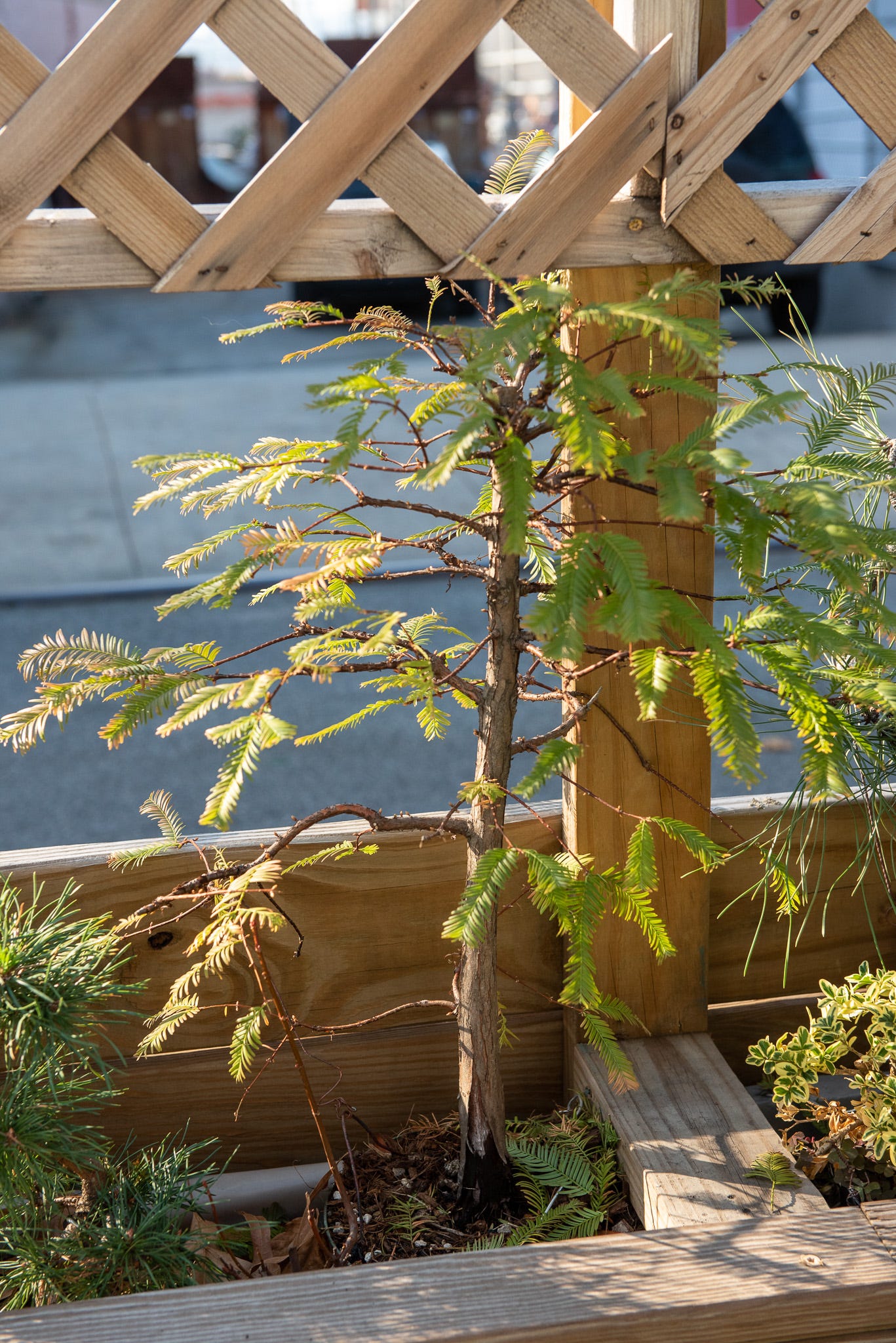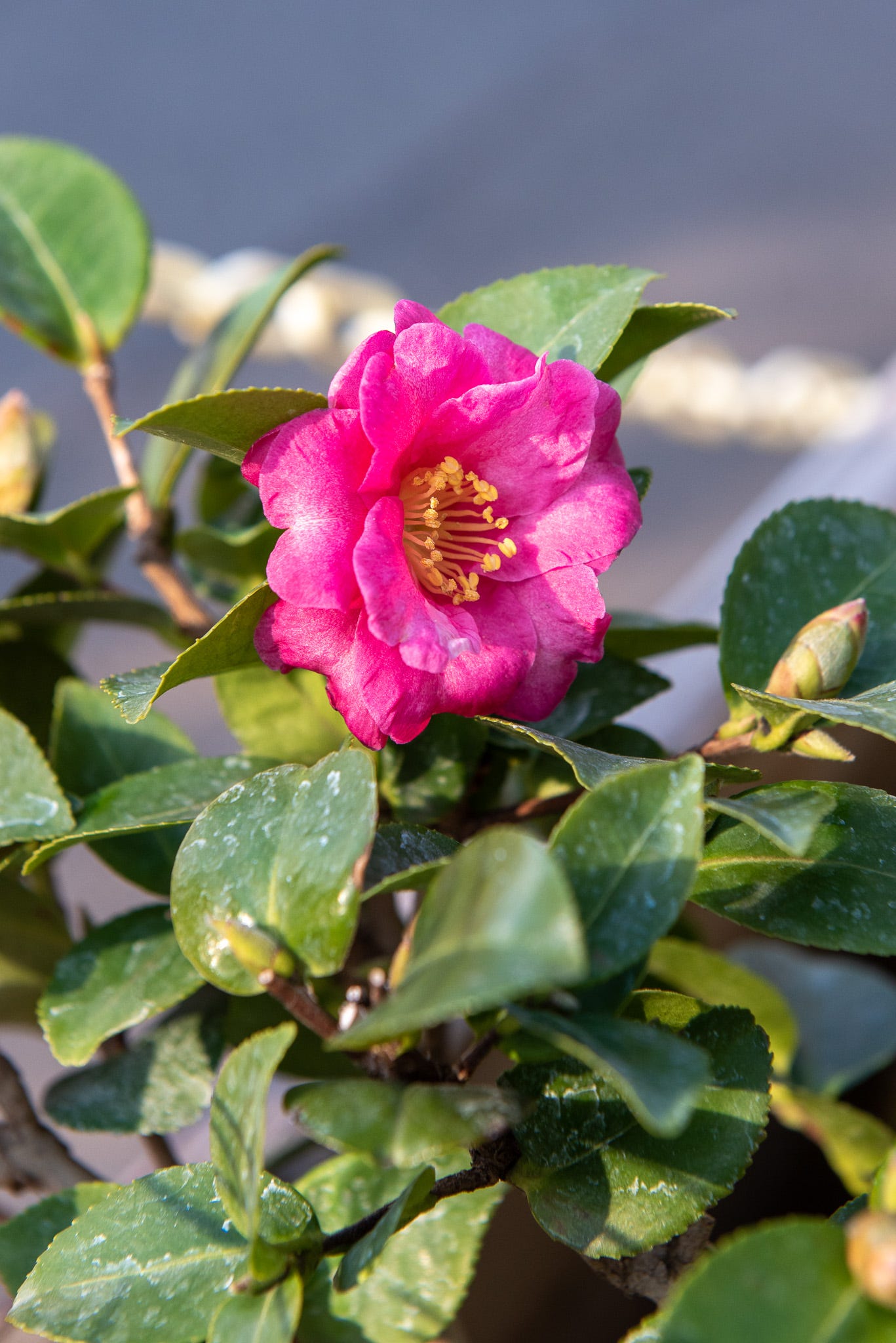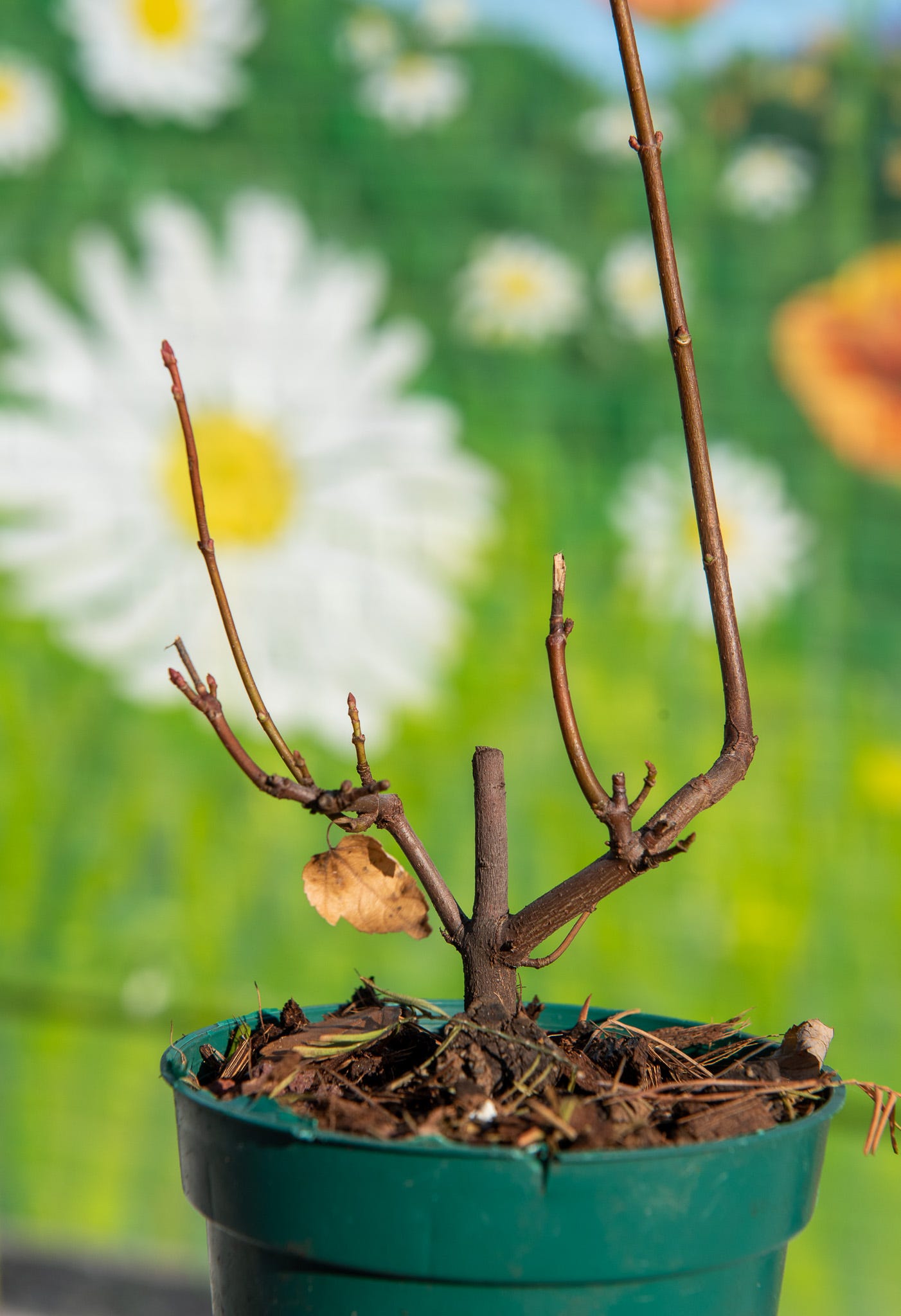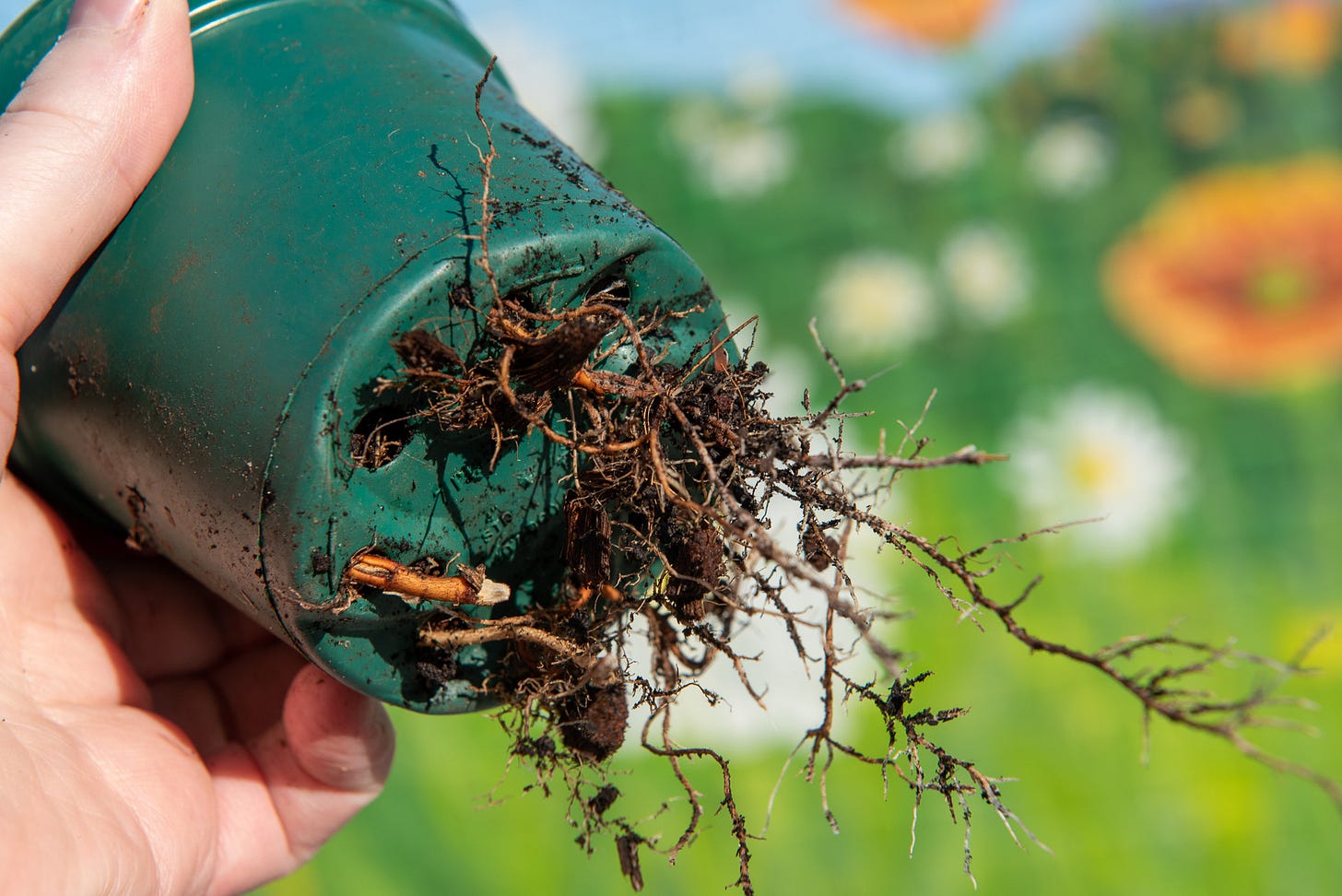Listening for the rain
An accumulation of inconsequential skills.
Because of all the rain the last few weeks, I’ve barely stopped by my outdoor trees. Come fall, their water needs drop fast. Most of them are potted in soils with moisture-retentive organic matter. This time of year there’s greater risk of overwatering them than underwatering.
Not all rain counts as a proper watering, though. The raindrops must be fat and explode on impact to penetrate mulch and soil. The rain must fall for so much time to ensure full coverage.
There are many kinds of rain in New York autumn. Misty drizzles, sweaty squalls—these don’t yield enough rainfall for me to comfortably skip watering. So I sit and listen to the rain, if it drips and splatters or pat-pat-patters or strikes the windows with force. I keep rough mental counters of days since last watering for each of my trees, then factor what kinds of soil they’re sitting in. When it rains hard, all the counters reset. Lighter drizzles may only affect certain trees with greater exposure. I’ve started to get decent gut feelings for how long I should go between waterings based on those counters. I’m learning to discern the types of rain.
I should note this is poor bonsai practice. One should check on their trees at least once a day to test soil moisture and each tree’s general posture. I was better behaved in the summer. I’d visit morning and night during heat waves. This is important, both for the tree’s health and for my relationship with it. Some problems only become apparent if I take regular note of a spot on a tree. I get a better sense of what to do with the next phase of its styling. I owe this camellia photo to an unnecessary trip to check on the trees.
So I want to get back in the habit of making daily visits. Part of the grand plan of keeping my trees at this restaurant was the brisk walk that I’d build into my routine. It’s a diverting chore to make me step outside and push up my heart rate.
Since planting my trees at the restaurant one year ago, I’ve become keenly familiar with the blocks between my home and my trees. I get to experience the same few streets through all seasons and patterns of light. Much of that familiarity is a gut feeling, like listening for the rain. A trivial study in great depth.
At times that’s what the last seven months have felt like. I am ostensibly on the other side of a relay race of assorted crises. My injured shoulder is almost fully healed. I’m able to pick up new work after a self-imposed medical leave.
From the outside looking in, I haven’t done much at all this year except listen for the rain. I published three short articles. I barely pursued new clients. For mobility and hermit reasons I rarely traveled far from my neighborhood. I’ve done a lot of thinking out loud about nothing in particular. As a freelance writer I worry about fading from editors’ eyes. As the accountant for Falkowitz Industries I see an income that’s perfectly fine in the short run, but wouldn’t be were I not the dumb-luck recipient of many advantages.
From the inside looking out I can tell you that I’m proud of my developing skills, which include: cooking and shopping with 1.5 arms; navigating the healthcare cartel; techniques for root-pruning trees; the best way to take psyllium husk so it doesn’t become a gross slime in a glass; basic reflexology exercises; a greater comfort with the inherently ephemeral nature of creative work; a deeper appreciation for the tinfoil hat anarchism of my teenage years; scenting tea leaves; how to really watch horror movies; identifying camellia species; a beginner’s understanding of textiles; methods to tamp down my dramatic tendencies.
None of this tracks with people when they ask what I’ve been up to. I’ve tried in all sorts of ways. There are rigid expectations for answers to this question, you know, and when you come out saying you’re busy on personal growth and thinking about ecoterrorism, you get blank stares.
My friend Wei once told me something that’s stuck. “I don’t think anyone is more experienced than anybody else,” she said. If we all share the same 24 hours, we share the same capacity for and levels of experience. It’s just a matter of what and when.
Deep down I can admit to myself that much of this growth is consequential, not trivial. That it’s actually a golden opportunity I only received because I was forced off the rat race treadmill.
On the other hand I think we can all agree there’s nothing consequential about listening for the rain when I can simply go outside and look at it. Yet in their mundane, unproductive, insignificant ways, I am sincerely most proud of the trivial skills like plant identifications and giving myself better haircuts.
While I’ve puttered with trivial matters my trees have put on vigorous growth. My red maple—the sole survivor of a squirrel-raided forest planting—developed nice branching including an obvious “sacrifice” trunk that I’ll prune from the finished design. All those roots will need a larger pot come spring.
I’m also encouraged by my ponderosa pine. After a difficult 18 months of cross-country shipping, climate shock, and shady exposure, the tree has finally shown signs of good health with this new flush of deep green needles. I think it will be ready for root work in spring. I plan to put it in a larger pot to gain more strength. Then by 2025 or 2026 it should be ready for serious styling.
This is the necessary time scale for a tree to thrive under the rigors of bonsai. Another skill that can’t be gained all at once.
Tree reading
This romantic account of the bonsai industry’s obsessions and abuses reads to me like a horror film treatment. I mean this as a positive. [The New Yorker]
My pal Tobin Mitnick, who you may remember from this chat, has started a newsletter of his own, and the first entry is killer. [Substack]






On Dec 3 and 4 the Malian indigo grower, dyer, textile artist Aboubakar Fofana will have a trunk show in Brooklyn. Amazing work. 505 Carroll, 2B.
https://tatter.org/issues/articles/beyond-the-blueness/